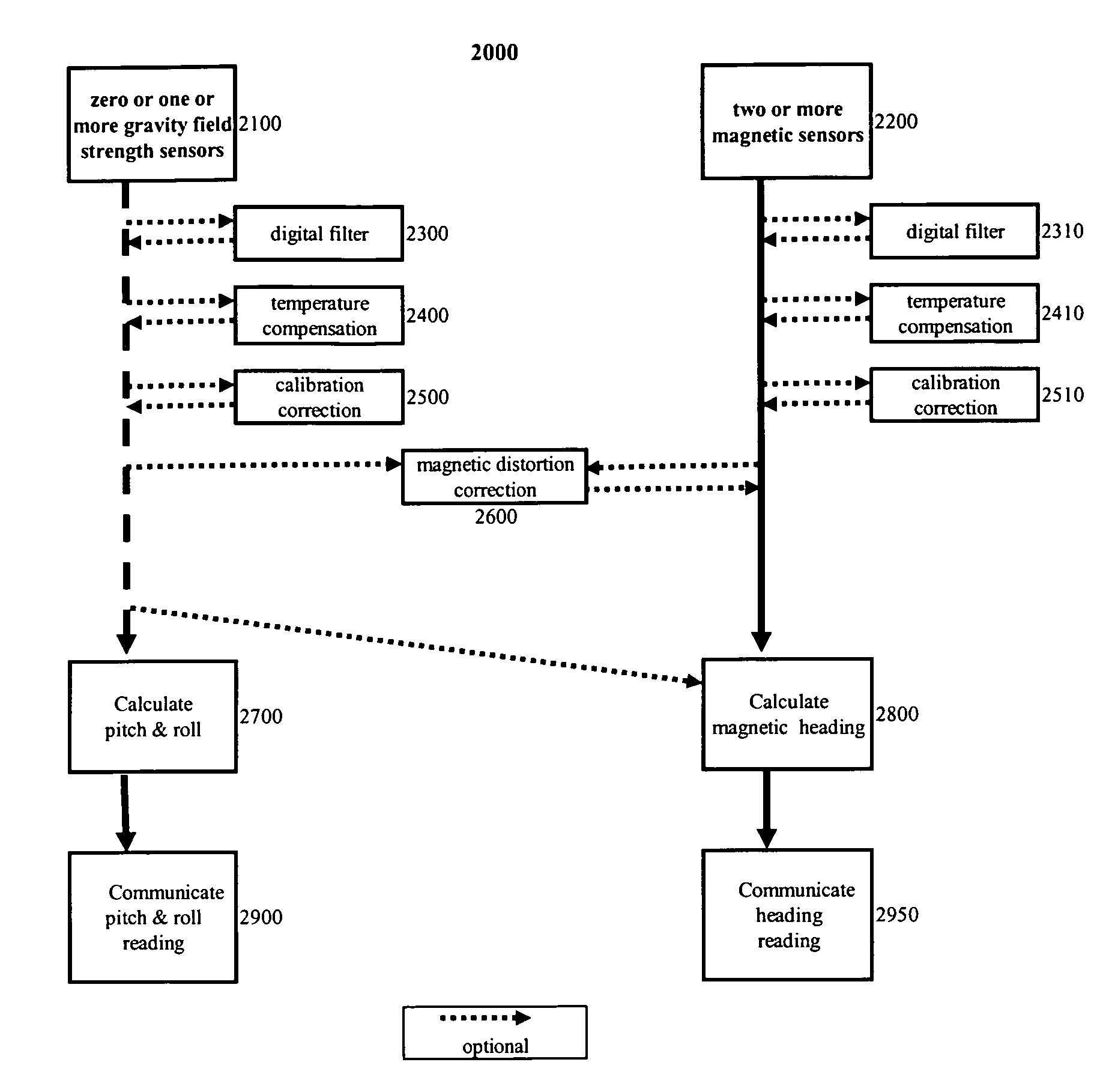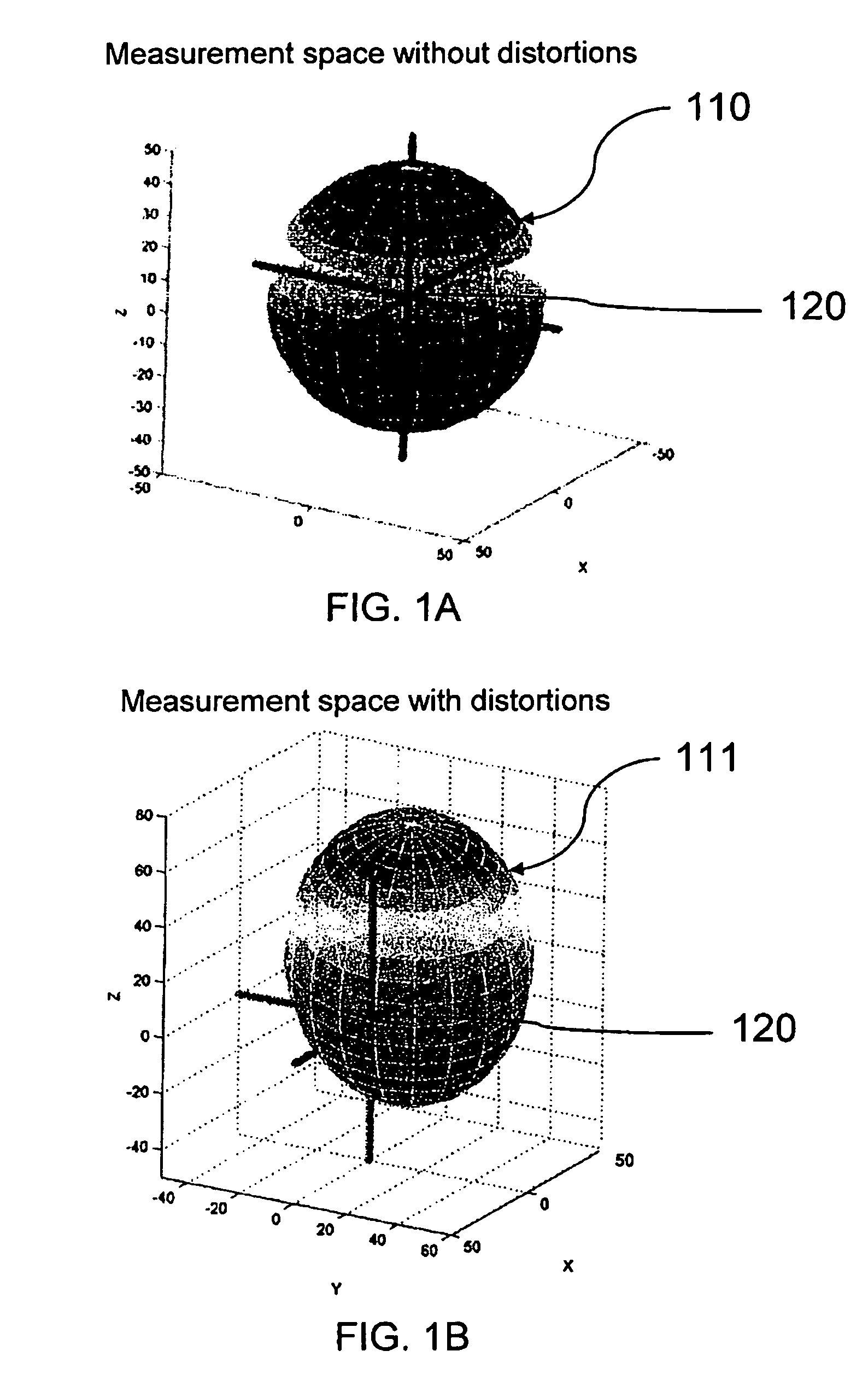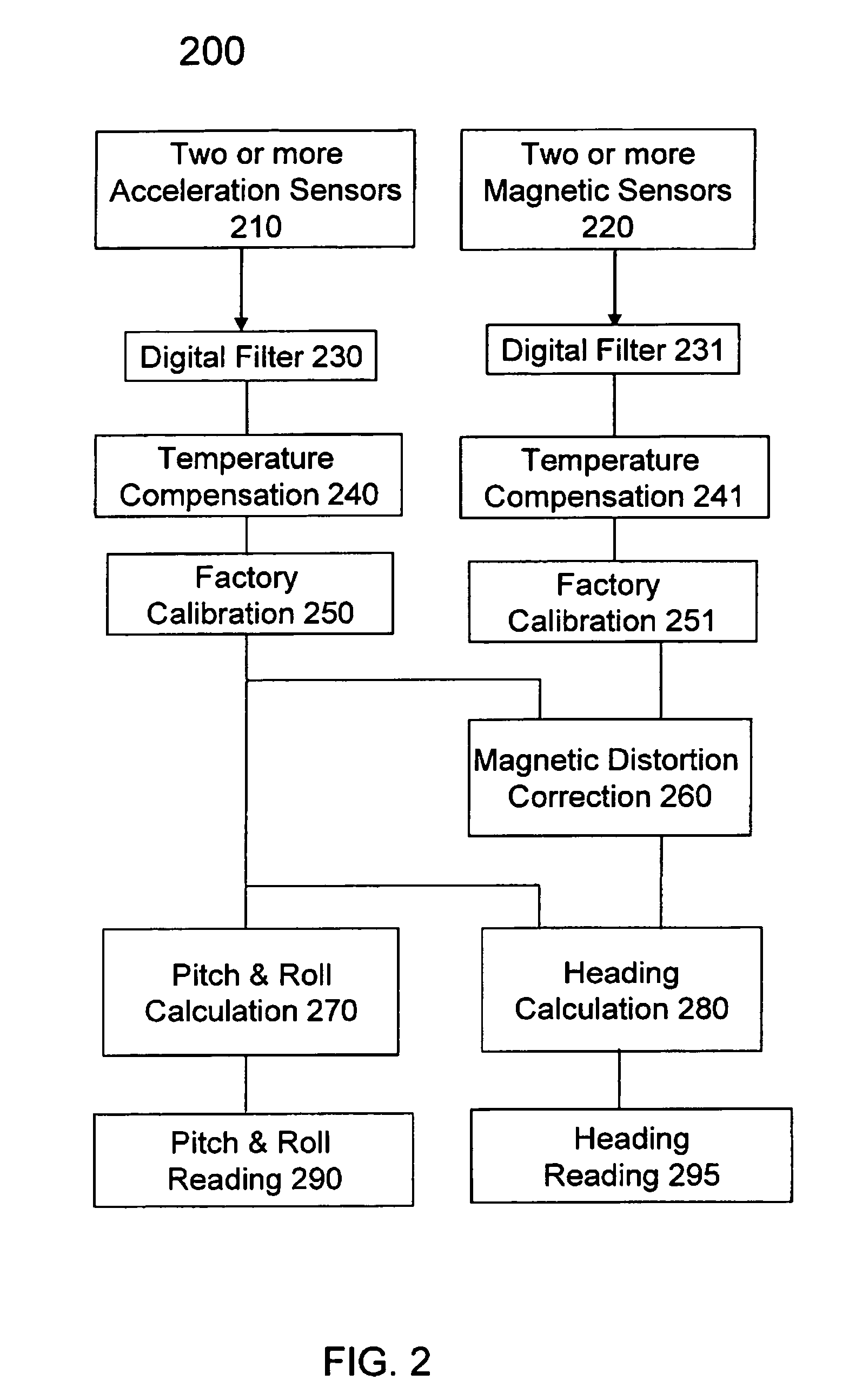Automatic calibration of a three-axis magnetic compass
a three-axis magnetic compass and automatic calibration technology, applied in the direction of instruments, navigation instruments, surveying and navigation, etc., can solve the problems of inability to determine orientation when a user is stationary, gps is also susceptible to signal interruption, and the magnetic distortion field is not only due, so as to reduce computing power and memory, improve the accuracy of determining the distortion, and reduce the cost
- Summary
- Abstract
- Description
- Claims
- Application Information
AI Technical Summary
Benefits of technology
Problems solved by technology
Method used
Image
Examples
Embodiment Construction
)
[0057]For magnetometers to be well calibrated for magnetic compassing, they must only sense Earth's magnetic field, and nothing else. With three magnetometers on three axes in an ideal situation, the measurements will seem to ride along the surface of a sphere of constant radius, herein referred to as a “measurement space.” The end-user may install a well calibrated module from a factory into an application whose magnetic environment contains distortions of a measurement space, and subsequently obtain a measurement with significant error in heading accuracy.
[0058]Two most common impairments to the measurement space are hard-iron and soft-iron distortions. The hard-iron distortion may be described as a fixed offset bias to the magnetometer readings, effectively shifting the origin of the ideal measurement space. It is usually caused by a permanent magnet mounted on or around the fixture of the compass installation and can be expressed as an offset vector H. Soft-iron distortion is a...
PUM
 Login to View More
Login to View More Abstract
Description
Claims
Application Information
 Login to View More
Login to View More - R&D
- Intellectual Property
- Life Sciences
- Materials
- Tech Scout
- Unparalleled Data Quality
- Higher Quality Content
- 60% Fewer Hallucinations
Browse by: Latest US Patents, China's latest patents, Technical Efficacy Thesaurus, Application Domain, Technology Topic, Popular Technical Reports.
© 2025 PatSnap. All rights reserved.Legal|Privacy policy|Modern Slavery Act Transparency Statement|Sitemap|About US| Contact US: help@patsnap.com



